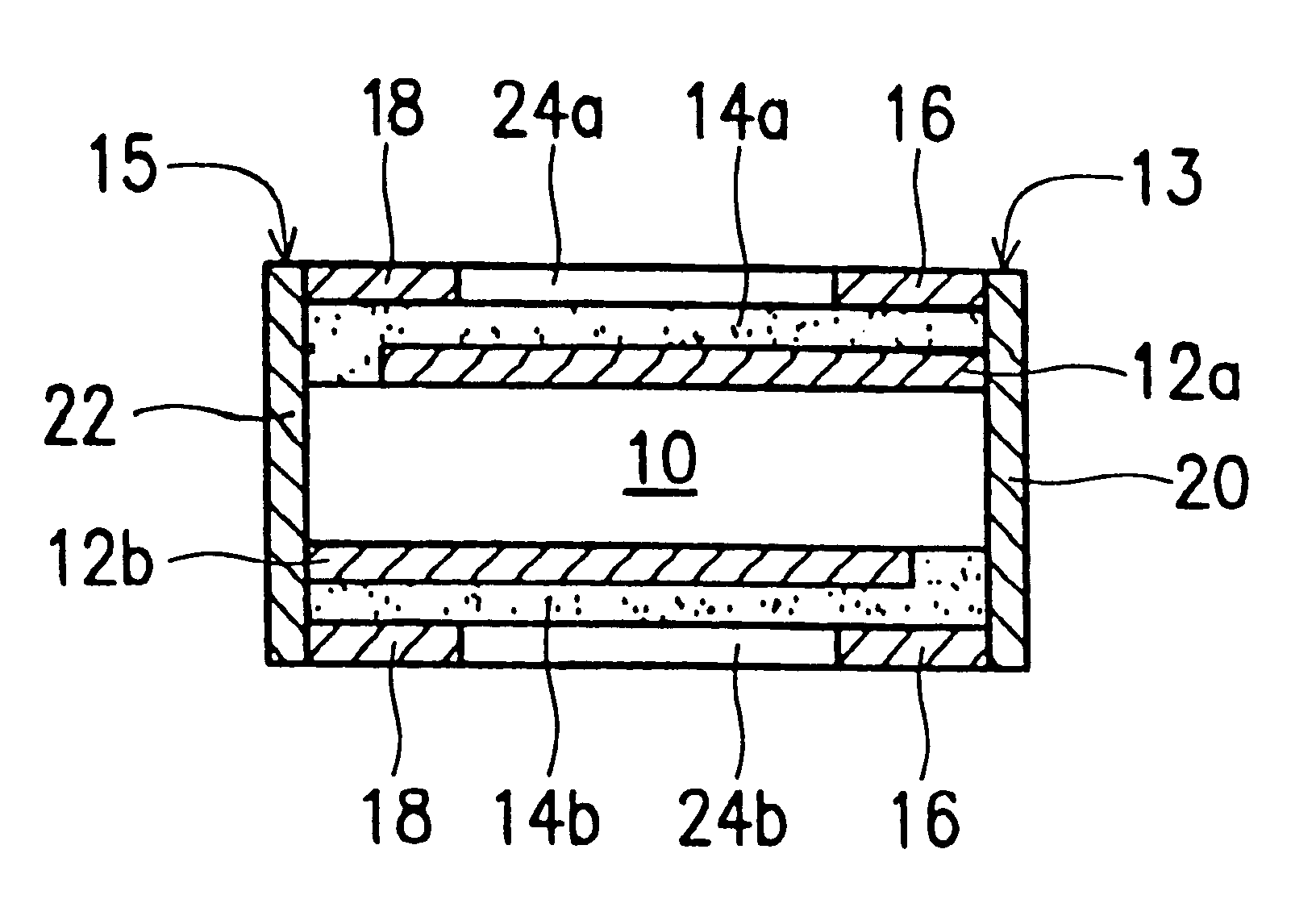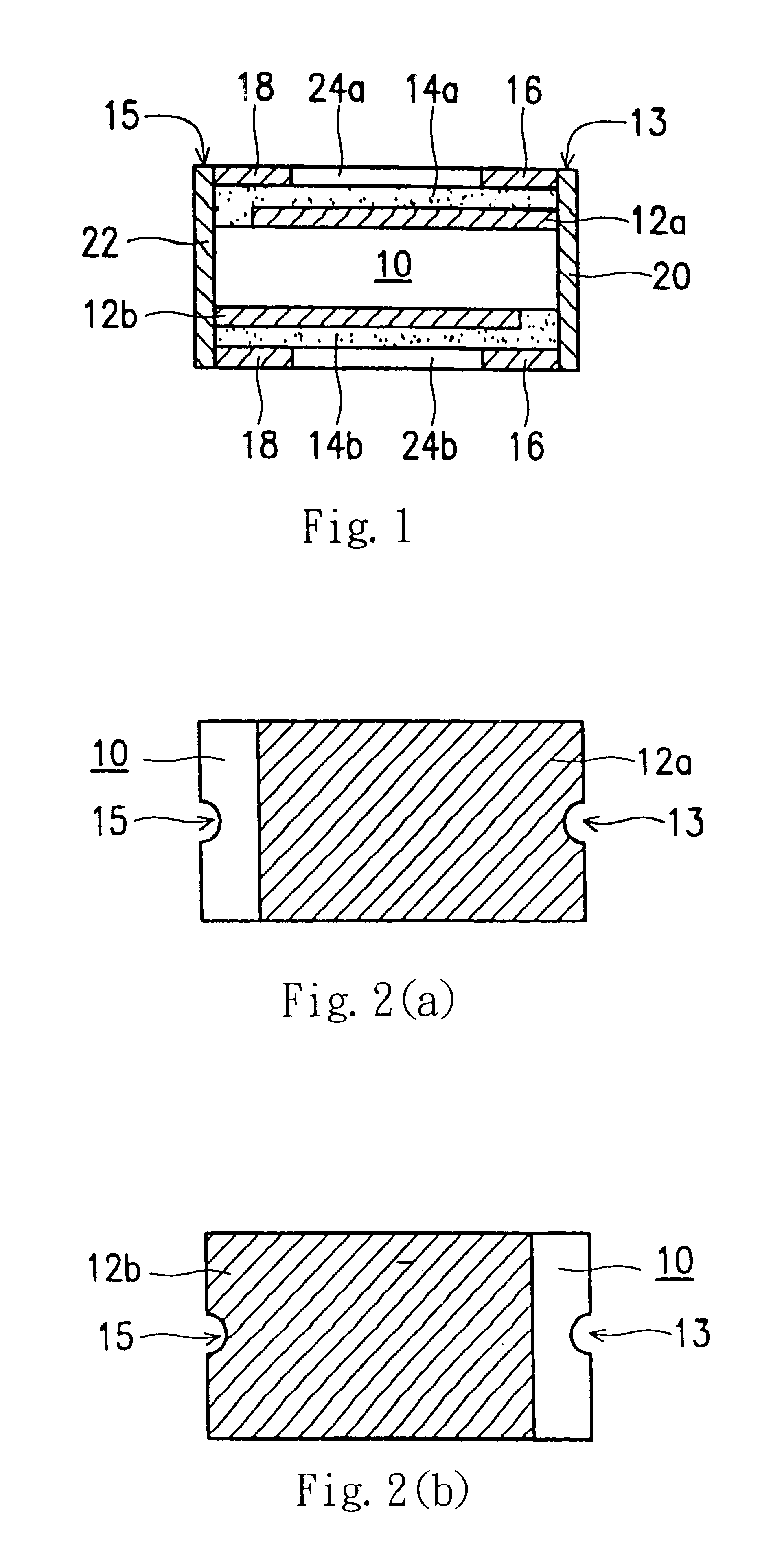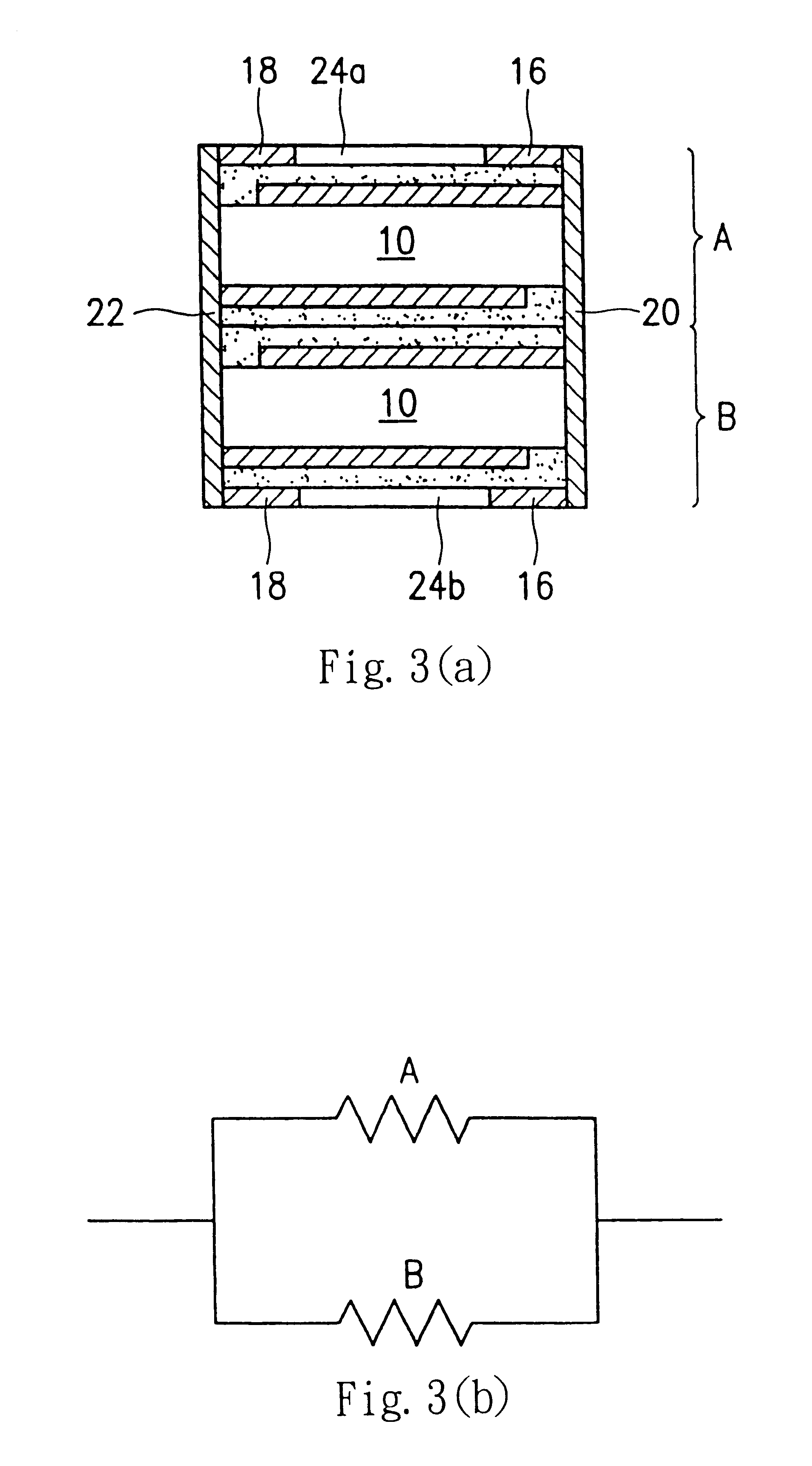Surface mountable over-current protecting device
a protection device and surface mount technology, applied in the direction of resistor housing/enclosement/embedding, positive temperature coefficient thermistors, other domestic articles, etc., can solve the problem of not teaching about how to solve a thermal conduction problem, the connection between the ptc apparatus and the pair of conductive metal terminals is not strong enough to withstand a reflow process, and the edge fracture of the ptc apparatus
- Summary
- Abstract
- Description
- Claims
- Application Information
AI Technical Summary
Benefits of technology
Problems solved by technology
Method used
Image
Examples
Embodiment Construction
A surface mounted thermal-sensitive resistance apparatus according to a preferred embodiment of the present invention is illustrated by FIG. 1 to FIG. 3. Firstly, FIG. 1 is a side view of the electrical apparatus according to a preferred embodiment of the present invention, and the electrical apparatus shown in FIG. 1 mainly comprises a thin-board resistive component 10, first and second insulating films 14a and 14b, first and second conductive components 12a and 12b, and outer electrodes 16 and 18 coupled to the conductive films 20 and 22 respectively.
The resistive component 10 is made of a polymer material with conductive particles dispersed therein and having a characteristic of a positive or negative temperature coefficient. Polymeric materials suitable for the resistive component of the present invention comprises: polyethylene, polypropylene, polyvinyl fluoride, compound and copolymer of the materials mentioned above. The conductive particle can be a metal particle, carbon par...
PUM
 Login to View More
Login to View More Abstract
Description
Claims
Application Information
 Login to View More
Login to View More - R&D
- Intellectual Property
- Life Sciences
- Materials
- Tech Scout
- Unparalleled Data Quality
- Higher Quality Content
- 60% Fewer Hallucinations
Browse by: Latest US Patents, China's latest patents, Technical Efficacy Thesaurus, Application Domain, Technology Topic, Popular Technical Reports.
© 2025 PatSnap. All rights reserved.Legal|Privacy policy|Modern Slavery Act Transparency Statement|Sitemap|About US| Contact US: help@patsnap.com



